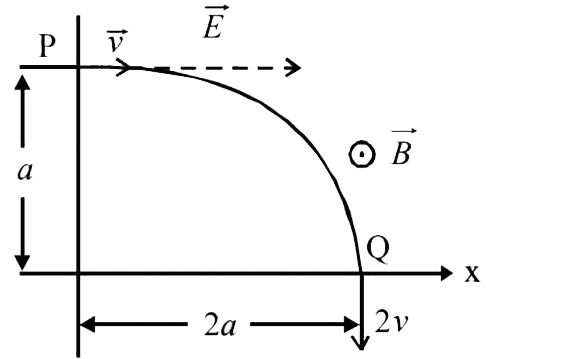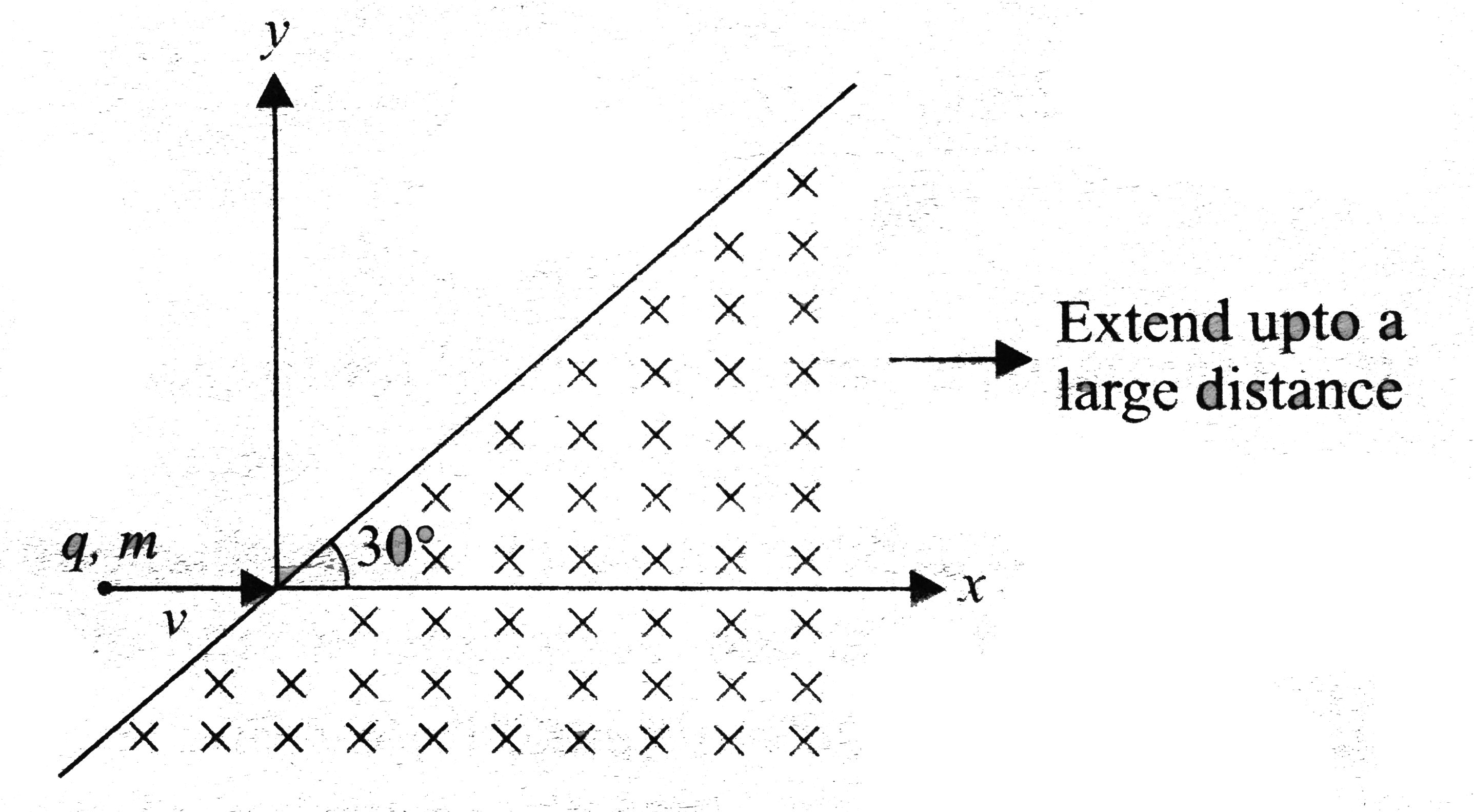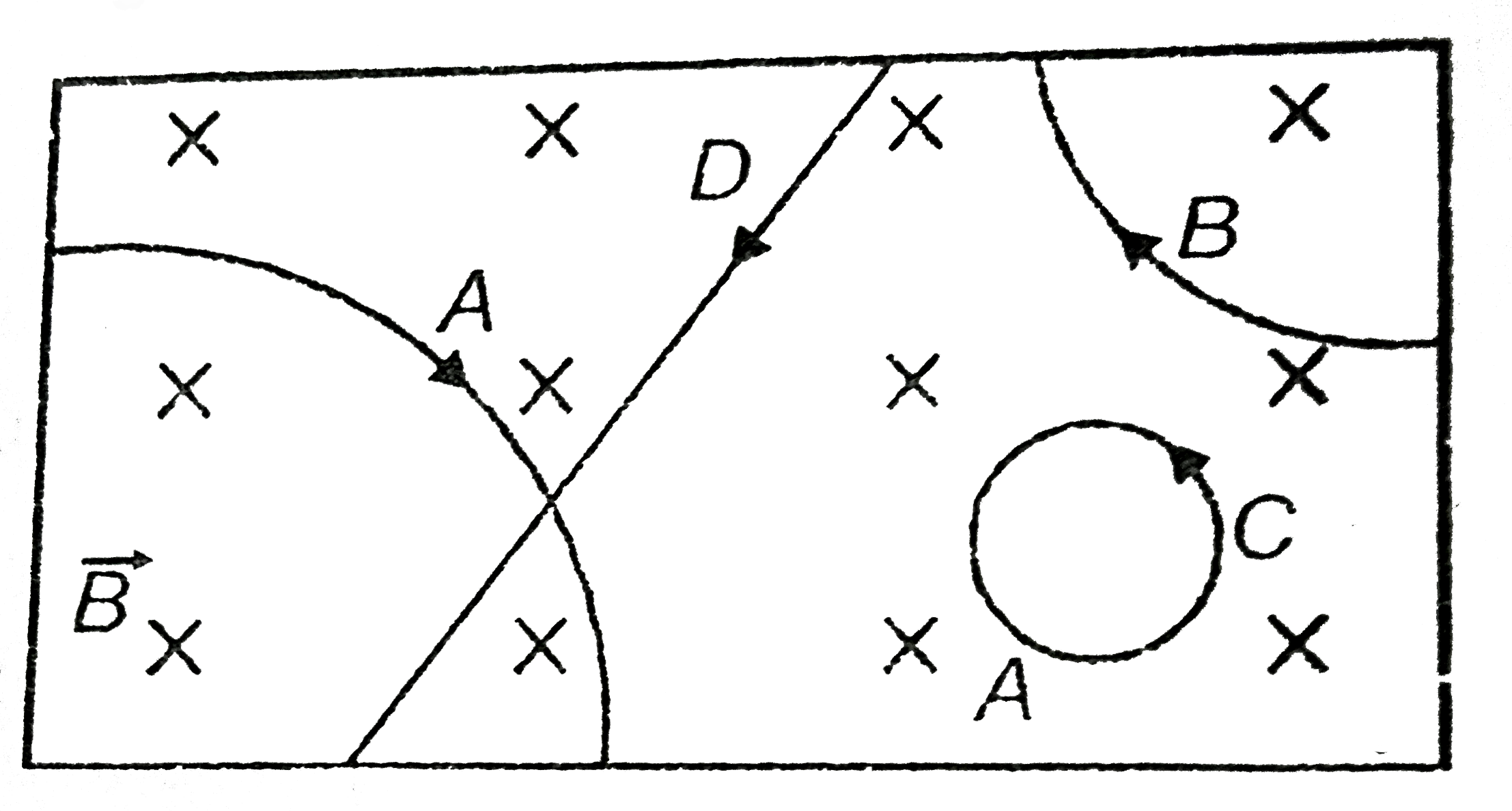A particle of charge +q and mass m moving under the influence of as uniform electric field Eˆi and uniform magnetic field Bˆk follows trajectory form P to Q as shown in figure. The velocities at P and Q re vˆiand−2ˆj. Which of the following statement(s) is/are correct?
![A particle of charge +q and mass m moving under the influence of as uniform electric field Ehati and uniform magnetic field B hatk follows trajectory form P to Q as shown in figure. The velocities at P and Q re vhati and -2hatj. Which of the following statement(s) is/are correct? a. E=3/4[(mv^2)/(qa)] b. Rate of work done by the electrif field at P is 3/4[(mv^3)/a] c. Rate of work done by the electric field at P is zero. d. Rate of work done by both the field at Q is zero.](https://d10lpgp6xz60nq.cloudfront.net/physics_images/DCP_VOL_4_C26_S01_044_Q01.png)
a.E=34[mv2qa]
b. Rate of work done by the electrif field at P is 34[mv3a]
c. Rate of work done by the electric field at P is zero.
d. Rate of work done by both the field at Q is zero.
E=34[mv2qa]
Rate of work done by the electric field at P is 34[mv3a]
Rate of work done by the electric field at P is zero
Rate of work done both the fields at Q is zero
The correct Answer is:A, B, D
Magnetic force does not do work. From work-energy theorem WFe=ΔDE or (qE)(2a)=12m[4v2−v2]
or E=34(mv2qa)∴ correct option is (A)
At P, rate of work done by electric fiedl =→Fe.→v=(qE)(v)cos0∘=q(34mv2qa)v=34(mv3a)
Therefore, option (B) is also correct. Rate of work done at Q : of electric field
=Fe.v=(qE)(2v)cos90∘=0
And of magnetic field is always zero. Therefore option (D) is also correct. Note that Fe=qEˆi
Topper's Solved these Questions
- MAGNETIC EFFECTS OF CURRENT BOOK - VMC MODULES ENGLISHCHAPTER - MAGNETIC EFFECTS OF CURRENT EXERCISE - JEE Main (Archive)
75 Videos
- LIQUIDSBOOK - VMC MODULES ENGLISHCHAPTER - LIQUIDSEXERCISE - JEE ADVANCED (LEVEL -2)
55 Videos
- MOCK TEST 1BOOK - VMC MODULES ENGLISHCHAPTER - MOCK TEST 1EXERCISE - PART I : PHYSICS (SECTION-2)
10 Videos
Similar Questions
A particle of charge +q and mass m moving under the influence of a uniform electric field Eˆi and uniform magnetic field Bˆk follows a trajectory from P→Q as shown in fig. The velocities at PandQ are vˆi and −2vˆj . which of the following statement(s) is/are correct ?

View SolutionA particle of charge q, mass starts moving from origin under the action of an electric field →E=E0ˆi and magnetic field →B=B0ˆk . Its velocity at (x,0,0) is v0(6ˆi+8ˆj). The value of x is
View SolutionA particle of charge q, mass starts moving from origin under the action of an electric field →E=E0ˆi and magnetic field →B=B0ˆk . Its velocity at (x,0,0) is v0(6ˆi+8ˆj). The value of is
View SolutionA charge particle of charge q and mass m is moving with velocity v as shown in fig In a uniform magnetic field B along -ve z-direction.Select the correct alternative (s).

View SolutionA charged particle moves in a uniform magnetic field B=(2ˆi−3ˆj) T
View SolutionA particle of charge q and velocity v passes undeflected through a space with non-zero electric field E and magnetic field B. The undeflecting conditions will hold, if
View SolutionA particle of charge q, mass m is moving in an electric field →E=EˆiNC−1 and magnetic field →B=BˆkT . It follows a trajectory from P to Q as shown Velocity at P is Vˆi & that at Q is −2Vˆj, find
a) electric field strength
b) power developed at P by electric field
c) rate of work done at by both fields at Q
View SolutionA charge q moves region in a electric field E and the magnetic field B both exist, then the force on its is
View SolutionA particle having charge q moves with a velocity v through a region in which both an electric field →E and a magnetic field B are present. The force on the particle is
View SolutionFour particles enter a region of uniform magnetic field. Their trajectories are shown in figure. What are the signs of the charge of all four particles ?

View Solution
